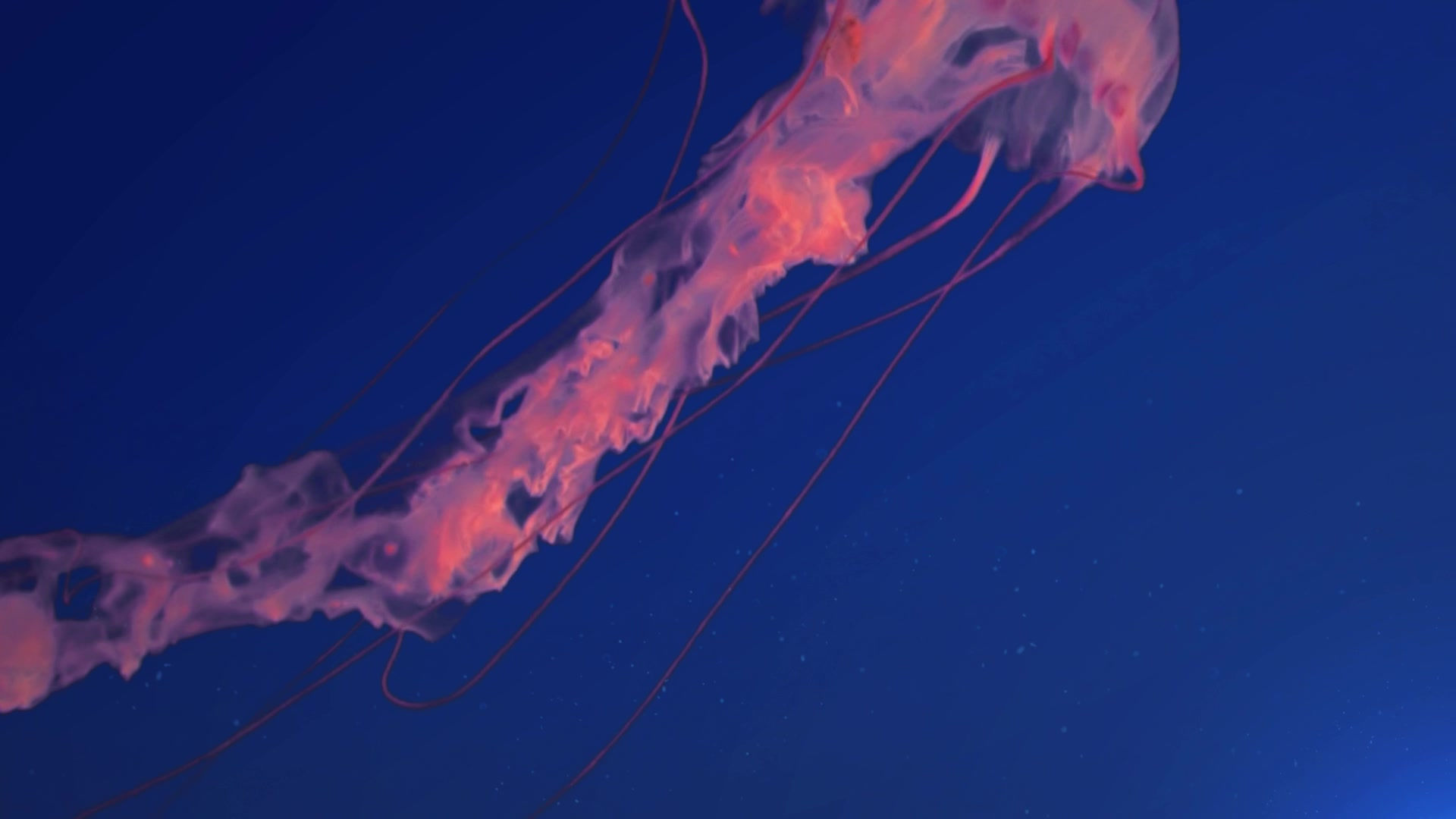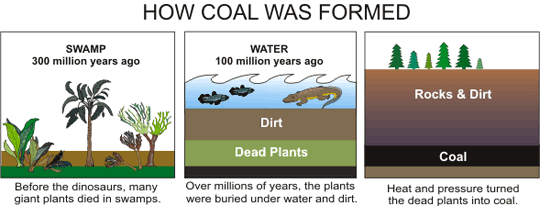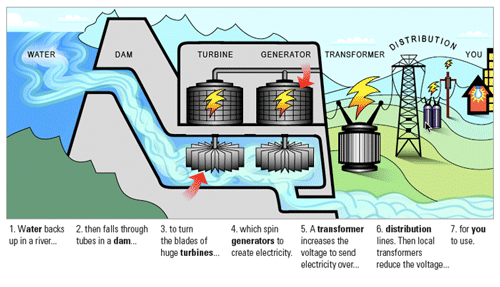
SC.912.L.17.20 Human Impact EOC Review
-
You need to know how the actions of humans may impact environmental systems and affect sustainability.
-
You need to know the costs and benefits of renewable and nonrenewable resources.
-
You need to know that environmental policy decisions should be made after adequate monitoring of environmental parameters.
-
You need to know how the environment and personal health are related.
TUTORIALS
Sustainability
Wind Turbine Energy
Global Warming
EOC Sample Questions
Humans actions impact the environment POSITIVELY and NEGATIVELY. As the human population grows, human activities may be increasingly harmful to ecosystems. However, unlike other organisms humans can recognize their impact on natural systems and change their behavior to minimize those effects.
NATURAL RESOURCES are RENEWABLE and NON RENEWABLE
A natural resource is any natural material that is used by humans. Examples of natural resources are water, petroleum, minerals, forests, and animals. The energy we get from resources, such as gasoline and wind, ultimately comes from the Sun’s energy. Resources are renewable and non-renewable




Obtaining and using fossil fuels has environmental consequences, such as:
1. Air Pollution
2. Acid Rain
3. Global warming
To continue to have access to energy and to overcome pollution, we must find alternative sources of energy.
ALTERNATIVE ENERGY SOURCES
Alternative energy sources are renewable and are thought to be "free" energy sources. They all have lower carbon emissions, compared to conventional energy sources. These include Biomass Energy, Wind Energy, Solar Energy, Geothermal Energy, Hydroelectric Energy sources.
Wind Energy (Windmill)
Positive Environmental Effect: Uses a renewable resource (as long as the wind blows). It is a clean source of energy (no CO2 emissions)
Negative Environmental Effect: The blades kill birds, bats
Many areas do not have the sustained winds needed to spin turbines


Hydroelectric Power (Dam)
Positive Environmental Effect: Uses a renewable resource; clean, no greenhouse gas emissions
Negative Environmental Effect: Stops the flow of nutrients downstream
Blocks migration of aquatic animals Example: Salmon (fish ladders are constructed to minimize the negative impact)
Building a dam is expensive


Solar Energy
Positive Environmental Effect: Uses a renewable resource; clean, no greenhouse gas emissions
Negative Environmental Effect: Solar power plants use large areas for collection of energy which result in habitat disruption. They are large and cannot be used everywhere
Solar panels can be costly to install

Biomass
In biomass power plants, wood waste or other waste is burned to produce steam that runs a turbine to make electricity, or that provides heat to industries and homes.

Geothermal Energy
Geothermal power plants use heat from deep inside the Earth to generate steam to make electricity.

Conservation and Sustainable Practices
Conservation is the wise use of resources to protect and preserve their supply. As the population grows, people need more resources. Resources are used to provide food, tools, and buildings. Others are used as energy for cars, or to provide electricity. Many resources are being overused and are in danger of being used up. Others such as air, water and soil are being polluted and made unfit for use by organisms
People are becoming more aware of how human actions can harm the environment. We can conserve natural resources through reducing, reusing and recycling
Air pollution
The main cause is the burning of fossils fuels. The pollutants released by burning oil, coal, and natural gas include smoke, dust, ash, carbon monoxide, carbon dioxide and sulfur oxides.
Common forms of air pollution include particulate, smog, acid rain and greenhouse gases
Particulates are small airborne particles of dust, soot. The smoke from burning fossils fuels is a source of particulates. These particulates can damage the respiratory system of humans and other organisms.
Smog is a visible haze that forms when smoke and gases from burning fuels combine with fog. The particulates in smog can harm people with asthma and other lungs disease. The gases often include nitrates and sulfates. These chemicals can mix with water vapor in the atmosphere to produce nitric acid and sulfuric acid. These acids are carried back to the ground as acid rain.
Beijin smog pictures before and after

Acid rain is precipitation that has a lower pH. Acid rain can injure or kills trees and other plants, damage building and kills aquatic organisms.
The burning of fossil fuels release sulfur dioxide and nitrogen oxide gases into the atmosphere. These gases mix with water vapor in the air and produce sulfuric acid and nitric acid

Effects of Acid Rain on Plants
-
Injures or kills trees and other plants
-
Damage their leaves by removing the waxing cuticle
-
Dissolves the nutrients and helpful minerals in the soil and then washes them away before trees and other plants can use them to grow
-
Causes the release of substances that are toxic to trees and plants, such as aluminum, into the soil

Effects of Acid Rain on Aquatic organisms
-
Kills aquatic organisms
-
Kills algae
-
As acid rain flows through soils in a watershed, aluminum is released from soils into the lakes and streams located in that watershed. So, as pH in a lake or stream decreases, aluminum levels increase. Both low pH and increased aluminum levels are directly toxic to fish.
-
At pH 5, most fish eggs cannot hatch. At lower pH levels, some adult fish die. Fish become more sensitive to diseases.
-
Low pH and increased aluminum levels cause chronic stress that may not kill individual fish, but leads to lower body weight and smaller size and makes fish less able to compete for food and habitat.
Effect of Acid Rain on Buildings
-
Damage buildings
-
Contribute to the corrosion of metals (such as bronze) and the deterioration of paint and stone (such as marble and limestone)
The greenhouse effect is a natural process that keeps earth at a temperature that is suitable for life. Gases in the atmosphere trap some of the sun's energy, which warms the Earth.

Greenhouse gases like carbon dioxide, methane and water vapor trap heat near the surface of the earth.
Burning fossils fuels and forests releases carbon dioxide. Carbon dioxide is a greenhouse gas, one of the gases that produces the greenhouse effect.
Agricultural practices from raising cattle to farming rice release methane, another greenhouse gas.
Excess carbon dioxide in the atmosphere can increase temperatures all over the world by trapping more heat.
The amount of carbon dioxide in the atmosphere has been increasing since 1800s. Most scientists believe this is causing global warming.
Global warming is an increase in Earth's average temperatures. Global warming is leading to other changes in Earth's climate
CLIMATE CHANGE: How do we know? (http://climate.nasa.gov/evidence/)

This graph, based on the comparison of atmospheric samples contained in ice cores and more recent direct measurements, provides evidence that atmospheric CO2 has increased since the Industrial Revolution.
1. Global Temperature Rise
All three major global surface temperature reconstructions show that Earth has warmed since 1880.

The rising temperatures have melted glaciers
2. Glacial Retreat
Glaciers are retreating almost everywhere around the world — including in the Alps, Himalayas, Andes, Rockies, Alaska and Africa.

The disappearing snowcap of Mount Kilimanjaro
3. Declining Arctic Sea Ice
Both the extent and thickness of Arctic sea ice has declined rapidly over the last several decades

4. Decreased Snow Cover
Satellite observations reveal that the amount of spring snow cover in the Northern Hemisphere has decreased over the past five decades and that the snow is melting earlier.

5. Shrinking Ice Sheets
The Greenland and Antarctic ice sheets have decreased in mass.

Flowing meltwater from the Greenland ice sheet
The water from those glaciers is causing a rise in sea level, flooding wetlands and other coastal areas.
6. Sea Level Rise
Global sea level rose about 17 centimeters (6.7 inches) in the last century. The rate in the last decade, however, is nearly double that of the last century.

7. Warming Oceans
The oceans have absorbed much of this increased heat, with the top 700 meters (about 2,300 feet) of ocean showing warming of 0.302 degrees Fahrenheit since 1969
The warming of the waters causes coral bleaching and polar bears are losing their habitat.


8. Ocean Acidification
Since the beginning of the Industrial Revolution, the acidity of surface ocean waters has increased by about 30 percent.
This increase is the result of humans emitting more carbon dioxide into the atmosphere and hence more being absorbed into the oceans.
The amount of carbon dioxide absorbed by the upper layer of the oceans is increasing by about 2 billion tons per year

Ocean acidification weakens coral skeletons
9. Extreme Events
The number of record high temperature events in the United States has been increasing, while the number of record low temperature events has been decreasing, since 1950. The U.S. has also witnessed increasing numbers of intense rainfall events.
Global warming may also lead to more severe weather, an increase in the number of severe thunderstorms, tornadoes and hurricanes.
Changes in the amount and timing of precipitation in an ecosystem can affect which plants an animals live there.


DEFORESTATION the removal of all the trees in a forest


Consequences of deforestation
-
Habitat Destruction
-
Biodiversity Decreases ( "biological diversity," generally refers to the variety and variability of life on Earth)·
-
Contributes to Global Warming ( Plant remove carbon dioxide from the atmosphere to carry out photosynthesis)
-
Contributes to Soil Erosion (The root of plants hold soil in place)·
Sustainable Development Using Resources in Ways that do not destroy or deplete them for future generations
To Protect a Forest
-
Do not cut all the trees in a forest
-
Cut trees that are old, diseased or in an area that is overcrowded
-
Seeds can be planted to take their place
OZONE DEPLETION due to the use of CFCs
Between 20 and 50 kilometers above the the Earth's surface, the atmosphere contains the ozone layer. The ozone layer absorbs harmful ultraviolelet (UV) radiation from sunlight.
Overexposure to UV radiation is the main cause of sunburn. It also can cause cancer, damage eyes, and lower the resistance to disease. Intense UV radiation can damage plants and algae.
In 1970s satellite data revealed that the concentration the ozone was dropping
The Disappearing Ozone a "Hole" in the ozone layer
The figure shows the progression from 1981 to 1999. The darker blue color in the later image indicates that the ozone layer had thinned since 1981.
In 1974 scientists discovered gases called chlorofluorocarbons (CFCs) could destroy the ozone layer. CFCs were once used as propellants in aerosols cans, as coolant in refrigerators, freezers, and air conditioners. Following the recommendations of the researchers, 191 countries signed a major agreement, the Montreal Protocol which banned the use of CFCs.Because CFCs can remain in the atmosphere for a century, their effects on the ozone layer are still visible. But ozone-destroying CFCs have been decreasing.

Water Pollution
Pollutants in water come from industry, homes, farms, and ecosystems. These pollutants include sewage, chemical wastes, fertilizers, pesticides, animal wastes, and detergents.
Farm runoff contains large amounts of fertilizers, pesticides, sediment, and animal wastes that may cause eutrophication
Eutrophication is the process by which high concentration of nutrients in a body of water promote excessive growth of algae (algal bloom). As the algae die and decompose, decomposers deplete the water of available oxygen, causing the death of other organisms, such as fish. Eutrophication is a natural, slow-aging process for a water body, but human activity greatly speeds up the process due to the use of fertilizers

Many pollutants threaten biodiversity. DDT, for example, prevents birds from laying healthy eggs.
Pesticides and insecticides can be dangerous pollutants. When DDT gets into a water supply, it has desastrous effects on the organisms that directly and indirectly rely on that water a phenomenon called biological magnification occurs. Biological magnification is when a pollutant is picked up and is not broken down or eliminated. Instead, the concentration of the pollutant collects in body tissues, and its concentration increased as it passes from producers to consumers. Since DDT were banned in 1970s, bird populations have recovered
Biological Magnification is the increasing concentration of a harmful substance in organisms at higher trophic levels in a food chain or food web.

One industrial pollutant is a class of organic chemicals called PCBs that were widely used in industry until the 1970s. After several large-scale contamination events, PCBs were banned. However, because PCBs often enter mud and sand beneath bodies of water, they are difficult or impossible to eliminate. Lakes and coastal areas are still polluted with PCBs. Other industrial pollutants are heavy metals like cadmium, lead, mercury and zinc
Effects on Biodiversity
Many humans activities affect Earth's Biodiversity. For example the overuse of insecticides may kill too many bees, the bees could die out in some ecosystems. The reduction of bees could threaten the plants the bees pollinate.
Overfishing
Harvesting too many fish of a species places the species at risk of extinction.

Overhunting poses the same threats to animals
Deforestation destroys habitats
Desertification the transformation of productive land into a desert. Causes of desertification:
-
when livestock overgraze
-
when land is cleared by deforestation
-
when fields are plowed and left bare
-
poor farming techniques
-
improper irrigation methods
All these practices expose topsoil and make it more vulnerable to erosion by wind or water
1930s, drought and poor farming practices led to desertification of an area of the Great Plains. The became known as the "Dust Bowl" Millions of people who had made their livings as farmers were forced to leave their land. Much of the area has returned to fertile farmland through improved farming techniques and water management.
Conservation and Sustainable Practices

Sustainable Development Using Resources in Ways that do not destroy or deplete them for future generations
Policy decisions and Environmental Impact
Before approving a project such as the construction of roads and the locations of power plants, governments require an environment impact study. This study looks at different ways a project may affect native species.
Studies of environmental impact also affect policy decisions about when to use a chemical pesticides. Policy makers should approve the use of a pesticide only if they conclude that the benefits of using it outweigh the risks.
Once projects are approved and carried out, additional studies may be conducted to determine their effects. Like monitoring water and air quality or the size of wildlife populations.
